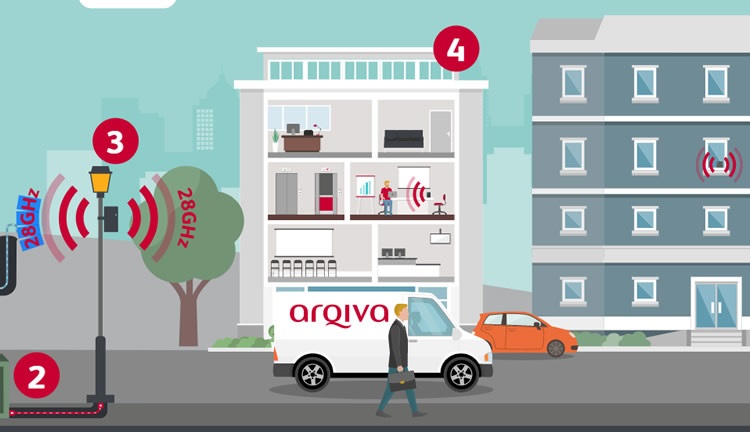By Jamie Carter 23 November 2017
Lamppost and other street furniture look set to become part of the UK’s next-generation 5G networks, hosting small cell telecommunications infrastructure to enable better, faster coverage by mobile network operators.
UK communications infrastructure company Arqiva has inked a deal with the London Borough of Waltham Forest to gain exclusive access rights to 16,000 lamppost in the area, and within the 10 years of the contract intends to use them for the deployment of small cell technology.
Jonathan Freeman, Technology Director, Arqiva told 5G.co.uk: “The Waltham Forest concession alone involves around 16,000 lampposts as potential small cell sites. Not every available concession site will carry a small cell, but across London we would expect to eventually see small cell deployments in the hundreds of thousands.”
Small cells are routinely used by the telecoms industry to boost mobile coverage in areas that lack reliable signals, or to cope with unusually high demand for bandwidth. They’re often installed on street furniture, the sides of buildings, and in shopping centres to allow people to use mobile devices without connection problems.
“Fixed Wireless Access (FWA) – sometimes known as Fixed Wireless Broadband – is an alternative means of providing internet connectivity that uses wireless network technology rather than fixed lines,” said Freeman. “An access unit is attached to street furniture – like a lamppost – which then wirelessly connects to a receiver placed inside a home or business property; the receiver then feeds a router (often integrated into the same form factor) which provides WiFi signal into the building, enabling users to connect their numerous everyday devices.”
FWA will be critical to 5G networks when they begin to offer services in the 2020s. 5G will use much higher frequencies with much shorter wavelengths, called millimetre waves (mmWave). This technique achieves incredibly high bandwidths, but only over very short distances. For that reason it’s expected that the backbone to 5G networks will be fibre optic cables between macro sites on towers and rooftops, with a vast network of WiFi access points – or small cells – in dense urban areas, and a new generation of super-fast fixed line wireless routers.
“The next generation of FWA will use innovative 5G technologies to deliver a high throughput with potential for 1Gbps or more, along with latency as low as 1ms – both considerable enhancements not only to existing wireless standards but also currently deployed fixed technologies,” said Freeman.
Arqiva also plans to deploy WiFi access points on lampposts in town centres across Waltham Forest to provide free public access to WiFi services. This is not uncommon now; street furniture already plays an important role in providing 4G signals to densely populated areas.
Arqiva already has fourteen similar concessions in London (Barnet, Brent, Camden, Hammersmith and Fulham, Haringey, Harrow, Hounslow, Islington, Kingston-Upon-Thames, Lambeth, Merton, Richmond upon Thames and Wandsworth) as well as in Manchester, Southampton, Colchester, Eastbourne and Medway.
Freeman added: “We are delighted to be working with 14 London boroughs so far and look forward to engaging with others as they launch their tender processes.”
Source: https://5g.co.uk/news/arqiva-16-000-london-lampposts-5g-ready-cells/4236/

